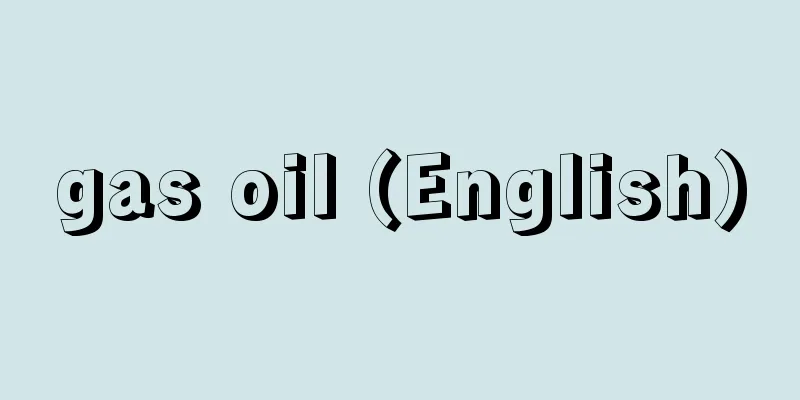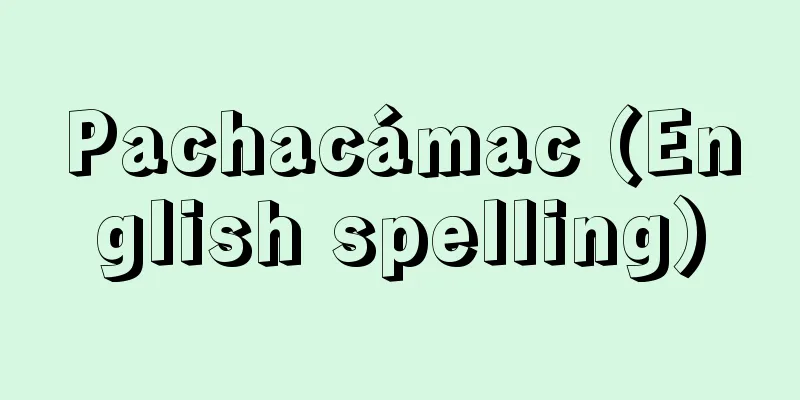Iroha Gutter - Iroha Gutter

|
...A city in southern Saitama Prefecture. Established as a city in 1970. Population 64,430 (1995). It is made up of the northeastern edge of the Musashino Plateau and the lowlands on the west bank of the Arakawa River. During the Edo period, it was a post town on a side road that connected Oshu to Sagami and Koshu, and was called Hikimata-cho. Two or seven six-storey markets were established here as a distribution center for goods from the surrounding farming villages. Sweet potatoes, wheat, rice, and other produce were shipped from Hikimata-gashi, built on the Shingashi River, as well as grapes from Koshu and washi paper, via the Arakawa River to Edo, and its commercial area extended as far as Tokorozawa, Ome, and Kofu. ... From [Nobidome Irrigation Canal]…In 1655 (Meireki 1), Matsudaira Nobutsuna, who was a senior councilor and lord of Kawagoe Domain, requested the shogunate to divert water from the Tamagawa Aqueduct at the western edge of present-day Kodaira City, Tokyo, and to divert water for daily life to develop the Musashino farmland around Nobitome Village, Niiza County, Musashi Province (present-day Niiza City, Saitama Prefecture). Nobutsuna ordered his vassal Yasumatsu Kaneemon to divert water, which was a 24km long irrigation canal that flowed through Hikimata (present-day Shiki City, Saitama Prefecture) and into the Shingashi River. In 1662 (Kanbun 2), the canal was crossed over the river at a kakehi (Iroha-doi) and used as irrigation water for rice paddies in Muneoka Village (present-day Shiki City) on the opposite bank. It is said that the civil engineering work to open up the flat land was inexperienced, making it difficult to get water to flow, and that the work was carried out at night by surveying the light of lanterns and incense. … *Some of the terminology explanations that mention "Iroha Hi" are listed below. Source | Heibonsha World Encyclopedia 2nd Edition | Information |
|
…埼玉県南部の市。1970年市制。人口6万4430(1995)。武蔵野台地北東縁と荒川西岸の低地よりなる。江戸時代は奥州から相州,甲州へ通じる脇街道の宿場町で,引又(ひきまた)町と称し,周辺農村の物資の集散地として2・7の六斎市が立った。新河岸(しんがし)川につくられた引又河岸からはサツマイモ,麦,米などのほか,甲州のブドウや和紙なども荒川を通じて江戸へ積み出され,その商圏は所沢,青梅,甲府方面まで及んだ。… 【野火止用水】より…老中で川越藩主の松平信綱が1655年(明暦1)幕府に願い,現東京都小平市の西端で玉川上水を分水して,武蔵国新座郡野火止村(現,埼玉県新座市)周辺の武蔵野畑作新田を開発するために引水した生活用水。信綱が家臣安松金右衛門に命じて引水した24kmの用水路で,引又(現,埼玉県志木市)を経て新河岸(しんがし)川へ落流していたが,1662年(寛文2)から掛樋(かけひ)(いろは樋(どい))で川をまたぎ,対岸の宗岡村(現,志木市)などの水田灌漑用水とした。平地を開削する土木工事が未熟で流水が困難であったことや,工事は夜間,提灯や線香の火によって測量したことなどが伝えられている。… ※「いろは樋」について言及している用語解説の一部を掲載しています。 出典|株式会社平凡社世界大百科事典 第2版について | 情報 |
<<: "Iroha Nichirenki" - Iroha Nichirenki
>>: "Iroha Newspaper" - Iroha Newspaper
Recommend
Westernization Movement
A movement carried out in China from around 1860 ...
Yoshiro Seno - Seno
A practicing Nichiren Buddhist. Born in Hiroshima ...
Janes - Le Loya Janes
An American educator who was the father of the Ku...
Aiiku Research Institute
…It is an organization that aims to promote the h...
Smithson, P. (English spelling) SmithsonP
… While the mainstream of British architecture in...
Strix uralensis (English spelling) Strixuralensis
…Of these, six species breed: the Great Horned Ow...
Ulmaceae
…It is also linked to Morpheus, the god of dreams...
World Geography Book - Sekaiichirisho
This refers to books on world geography from the E...
DR - Dr.
《 Deposit receipt 》An alternative security traded ...
Schizophrenia
…This is the major work of Swiss psychiatrist Bin...
Dressing - Doreshshingu (English spelling) dressing
It is a sauce for salads. In English, it also mea...
Chinese Classics Tang Poetry Song Ci Yuan Song - Kanbun Toushisou Shigenkyoku (English)
A phrase that juxtaposes prose from the Han dynast...
manila copal (English spelling) manilacopal
…Agathis resin, together with resin from Dipteroc...
Qingzhen Si (Qingzhen Si)
The name of an Islamic temple in China. Also calle...
Corallium konojoi (English spelling)
…[Akira Chikayama]. . . *Some of the terminology ...









